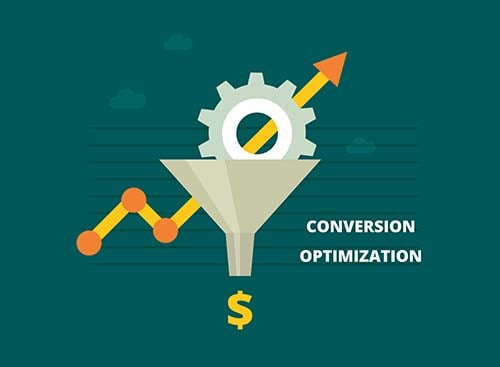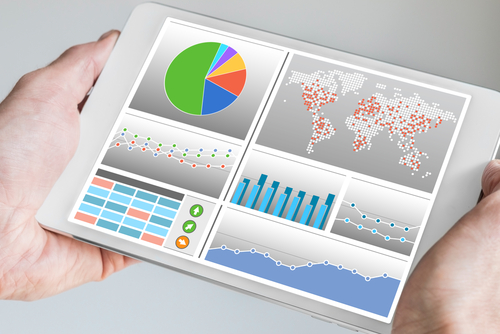Ecommerce has revolutionised the way retailers are doing business. Consumers can purchase online 24/7 from the comfort of their own homes, around their busy schedules, without worrying about setting out a going to go shopping to a physical store.
With more customers now purchasing online than ever before, building an online store has to be considered a strategy for any retailer to expand its reach, target new customers and increase sales.
Benefits of Ecommerce
There are several advantages to Ecommerce over traditional retail. Some of those advantages include:
- Better customer experience
- Monitor customer buying habits
- Offering a personal approach
- Endless growth opportunities
- Targeted advertising and marketing
Learn more about the key benefits of Ecommerce
Latest Ecommerce trends
The Ecommerce industry is constantly growing, all the while changing. Mobile usage, shifting customer demands and advanced technologies have certainly kept Ecommerce brands on their toes in 2018 and 2019 is set to be the same.

Ecommerce trends that you need to be aware and need to take advantage of include:
- Omni channel personalisation
- Shoppable social posts
- AI and Chatbots
- Interactive product visualisation
Read more about the essential Ecommerce trends 2019
Ecommerce marketing best practices
Maximising ROI should be one of your main goal for your Ecommerce business. In this eCommerce marketing best practices guide we look at strategies to maximise the performance of:
- Pay per click advertising
- Content marketing
- SEO
- Email marketing
- eCommerce marketing automation
- Retargeting
These marketing strategies are the most popular for Ecommerce managers to use for their campaigns and provide best results.
Content Marketing is one of the best ways to generate targeted traffic to your website and to create authoritative content.
Some of the most common types of content for marketing purposes include:
- Blog posts
- Videos
- Landing pages
- Guides and ebooks
- Emails
- Webinars
Content marketing starts with attraction as the main way to drive business, have a defined marketing goal in mind and target a specific audience.
How to increase sales with an Instagram Ecommerce strategy
Today, brands are no longer relying on their website to generate sales. It’s all about getting in front of your target audience where they hang out online, and for many ecommerce brands (especially those targeting a younger demographic), that’s Instagram. But how is your business supposed to stand out amongst a sea of fixated news-feed scrollers getting their daily ‘Insta fix’?
In this article, learn how to use Instagram to generate ecommerce sales, with particular focus on:
- Targeted ads
- Shoppable posts
- Influencers
- ‘Swipe-Up’ to shop
- Customer curated content
Read more on how to increase ecommerce sales with Instagram
Ecommerce remarketing advertising tips
Remarketing is one of the most powerful strategies to increase conversions on your website.
Remarketing online refers to marketing campaigns that target shoppers who have already viewed something on your website or have demonstrated an interest in your products but have not completed a conversion.
In this eCommerce remarketing article we look at the most popular remarketing ad platforms including
- Google Ads
- AdRoll
One of the main remarketing strategies for eCommerce businesses is to remarket to those who have abandoned carts i.e; those who have added items to a basket but did not follow through the checkout phase and complete the purchase.
How to choose the best Ecommerce software
Choosing an eCommerce software solution is critical for achieving your revenue goals. There are many eCommerce solutions that you may have heard of, however not all solutions are suitable for your needs and the requirements of your customers.

To decide on what eCommerce software is best for your business, there are many things, you need to consider including:
- Availability of linking to your stock system
- Ability to link to an ePOS system
- The solution is compatible with payment providers
- Scalability
- Usability
- Not development intensive
- Search engine friendly
Learn more about choosing the right software for your eCommerce business.
Choosing a Payment Gateway Provider
There are several payment gateway providers that you can use for your business, however, not all will fit your business requirements. With a payment gateway, you can take card payments from customers who want to buy a product from your eCommerce shop.
The most popular payment gateways include:
- Stripe
- PayPal
- WorldPay
- SagePay
Online Shop Web Design Trends 2019
Choosing a design design for your Ecommerce store is an important step for growing your business online. Some of the top web design trends include:
- Lazy loading images
- Use of an accurate search bar
- Chat bot integration
- Minimalist web design
Read more about the latest web design trends
Generating Traffic To Your Ecommerce Website
Your eCommerce website will not make you money without traffic. The more targeted traffic you get to your website the more sales you will make.
Inbound Marketing
The buying process has changed and it is now becoming more difficult to penetrate target markets successfully. Buyers are taking control with nearly 60% of purchase decisions now occurring before contacting a supplier.
The inbound methodology helps you maximise your marketing spend, effectively increase website traffic, boost lead generation, generate sales and improve customer loyalty.
Unlike the traditional methods of marketing, inbound marketing is about attracting the right type of customer to your eCommerce business, pulling them towards you, instead of pushing yourself towards them. Rather than forcing your product or service on people, you make it easier for them to find you at the right time.
The technique focuses heavily on content marketing, email marketing, search engine optimisation (SEO), lead generation and social media, to increase brand awareness and create high quality sales leads for your business. By aligning content to your prospects interests, you will naturally attract inbound traffic that you then convert, close and delight.
Learn more about inbound marketing
SEO
Through search engine optimisation you can generate targeted traffic to your website from organic searches from potential customers searching on search engines such as Google.
The advantage of using SEO is that it provides a measurable ROI. When done right, it will provide your eCommerce store with a constant flow of free traffic.
Investing in SEO acts like a prospect magnet for your business, so you must take action to ensure your website ranks high for the keywords your target market are searching for online.
PPC
PPC offers the best opportunities for eCommerce businesses to get instant results. It can also be one of the most expensive marketing costs, making it crucial to get right. When done well, PPC ads bring targeted and qualified traffic to your website.
Here are tips for best PPC performance
Ecommerce conversion rate optimisation tactics
Conversion rate optimisation is one of the main KPI’s that Ecommerce managers need to track on a daily basis.

Factors that influence conversion rates on eCommerce websites include the following:
- Using a simple checkout
- Have key information above the fold
- Place cart and checkout buttons above the fold
- Have add to basket buttons above the fold
- Using a simple visitor flow
- High quality images for all your products
Read this resource on increasing your conversion rates
Essential Ecommerce KPIs To Monitor
As an Ecommerce manager you will have access to so many stats and figures that it can seem like an overload. In this post we highlight the KPIs that you as a manager should focus your attention on.

Best practices suggest starting with your company objectives or goals and work from there. One of your goals may be to “increase overall traffic by 25% over the next 6 months”. The KPIs you would monitor may include traffic, bounce rate and traffic sources.
Key KPIs to focus on should include:
- Traffic
- Average order value
- Conversion rates
- Cart Abandonment
- Cost per acquisition
- New Vs returning customers
- Bounce rates
- Net profit
